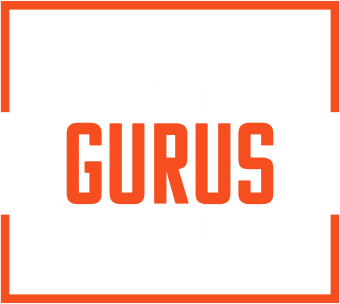Lawyers and legal staff face a daily deluge of tasks ranging from case research to extensive documentation, all demanding meticulous attention to detail and prompt action. This avalanche of responsibilities can easily become overwhelming, leading to bottlenecks that hinder productivity and, ultimately, client satisfaction.
Legal technologies are powerful tools that provide innovative solutions to eliminating these bottlenecks – but with so many digital trends crowding the marketplace, which ones should you be focusing on?
This article aims to shed light on how legal firms can streamline workflow processes through effective document management tools and the implementation of automation technologies.
Understanding the Workflow in Legal Firms
Legal firms are complex ecosystems where numerous processes run concurrently, each critical to the successful delivery of legal services. At the heart of these processes is the workflow – a term that encompasses the sequence of administrative and substantive tasks that must be completed for effective legal service delivery. To optimize workflow, it’s essential first to understand its components and the typical challenges that arise.
The Components of Legal Workflow
This initial stage involves gathering client information, understanding their legal needs, and setting up their case files. It’s the foundation upon which all subsequent work is built.
An integral part of legal work, this involves sifting through legal databases, previous case files, and other resources to build a strong basis for each case.
From drafting legal documents to preparing briefs and reports, this is a time-intensive process that forms the bulk of day-to-day activities in a law firm.
Regular communication with clients, courts, and other relevant parties is vital for keeping cases moving forward.
Accurate time tracking and billing are crucial for the financial health of the firm.
Common Bottlenecks and Inefficiencies
Losing track of important documents or spending excessive time searching for them can significantly slow down workflow processes.
Repetitive manual tasks not only consume valuable time but also increase the risk of errors.
Delays in communication can lead to missed deadlines and unsatisfied clients.
Without standardized procedures, each case can end up being handled differently, leading to inefficiency and confusion.
Failing to effectively allocate tasks based on team members’ expertise and workload can lead to bottlenecks.
The Role of Document Management in Legal Workflows
Effective document management is a cornerstone of efficiency in legal firms. In an environment where every case hinges on the precise handling of numerous documents, losing track of a single paper can have far-reaching consequences.
Understanding Document Management
Document management is a systematic approach to handling and organizing documents in a way that makes them easily accessible and trackable. This includes the creation, storage, management, and retrieval of documents.
Legal practices deal with a vast array of documents, including case files, contracts, and legal briefs. Efficient document management ensures that these important documents are secure, well-organized, and readily available when needed.
Effective Document Management Strategies
Converting paper documents to digital formats is a vital step. It not only saves physical space but also makes it easier to search and retrieve documents.
Implementing a structured filing system, possibly mirroring the firm’s case management structure, helps in quickly locating documents.
Establishing who has access to what documents is essential for maintaining confidentiality and security.
Periodically reviewing the document management system helps identify and rectify any inefficiencies or outdated practices.
Benefits of a Centralized Document Repository
- When documents are stored centrally, multiple team members can work on them simultaneously, boosting collaboration.
- Minimizes the chances of losing or misplacing important documents.
- Faster retrieval is especially beneficial under time-sensitive circumstances.
Transitioning to a Document Management System
- Start by assessing the current state of document management in your firm.
- Identify areas that need improvement, such as file organization, digitization, or access control.
- Choose a document management software or system that aligns with your firm’s specific needs — consider factors like scalability, security, and user-friendliness.
- Provide training and resources to staff to ensure a smooth transition to the new system.
Embracing Automation in Legal Workflows
Once a solid document management foundation is established, legal firms can significantly benefit from integrating automation into their workflows. Automation involves using technology to automate repetitive tasks, allowing staff to focus on more complex, value-added activities.
Begin by identifying repetitive, time-consuming tasks that don’t require specialized legal skills, such as data entry, document formatting, or scheduling.
Automation Tools for Legal Firms
Use templates and software to automatically generate standard legal documents, contracts, and letters.
Implement systems that automatically update case statuses, track deadlines, and manage case-related tasks.
Set up automated emails and reminders for clients and staff, ensuring that important information is communicated efficiently.
Benefits of Automation
- Improved efficiency: Speeds up processes, freeing up time for more important work.
- Consistency and accuracy: Reduces human error, leading to more consistent and accurate work outputs.
- Enhanced client experience: Faster turnaround times and fewer errors improve client satisfaction.
Transitioning to Automated Systems
- Select automation tools that integrate well with your existing systems and are easy for your team to use.
- Provide adequate training to ensure staff are comfortable with new technologies.
Implementing a Workflow Optimization Strategy
With an understanding of the roles of document management and automation, legal firms can develop a comprehensive workflow optimization strategy. This involves combining the principles of effective document management with strategic automation to create a streamlined, efficient workflow.
Developing a Workflow Optimization Strategy
Conduct a thorough review of your current workflows, identifying areas for improvement in document management and task automation.
Define clear objectives for what you want to achieve with workflow optimization, such as reduced processing times, better document organization, or improved client satisfaction.
Develop a plan to integrate document management and automation tools into your workflow processes. This should include timelines, resource allocation, and training schedules.
Regularly monitor the implementation and evaluate its impact on your firm’s efficiency and service quality.
Key Considerations
- Tailor the optimization strategy to fit the unique needs and structure of your firm.
- Engage your team in the process, taking their feedback and suggestions into account.
- View workflow optimization as an ongoing process, regularly seeking ways to further refine and improve.
Discover the Future of Legal Workflow Efficiency
The journey towards optimized workflows involves understanding and improving document management, embracing automation, and implementing a comprehensive strategy that addresses the unique needs of your firm. While these steps are achievable, they require careful planning, the right tools, and a commitment to continuous improvement.
ITGurus has the expertise, resources, and technology needed to efficiently transition legal firms to optimized workflows. Our experts can assist in selecting and implementing the right document management systems and automation tools, provide training to your staff, and offer ongoing support to ensure that your firm continues to operate at peak efficiency.


